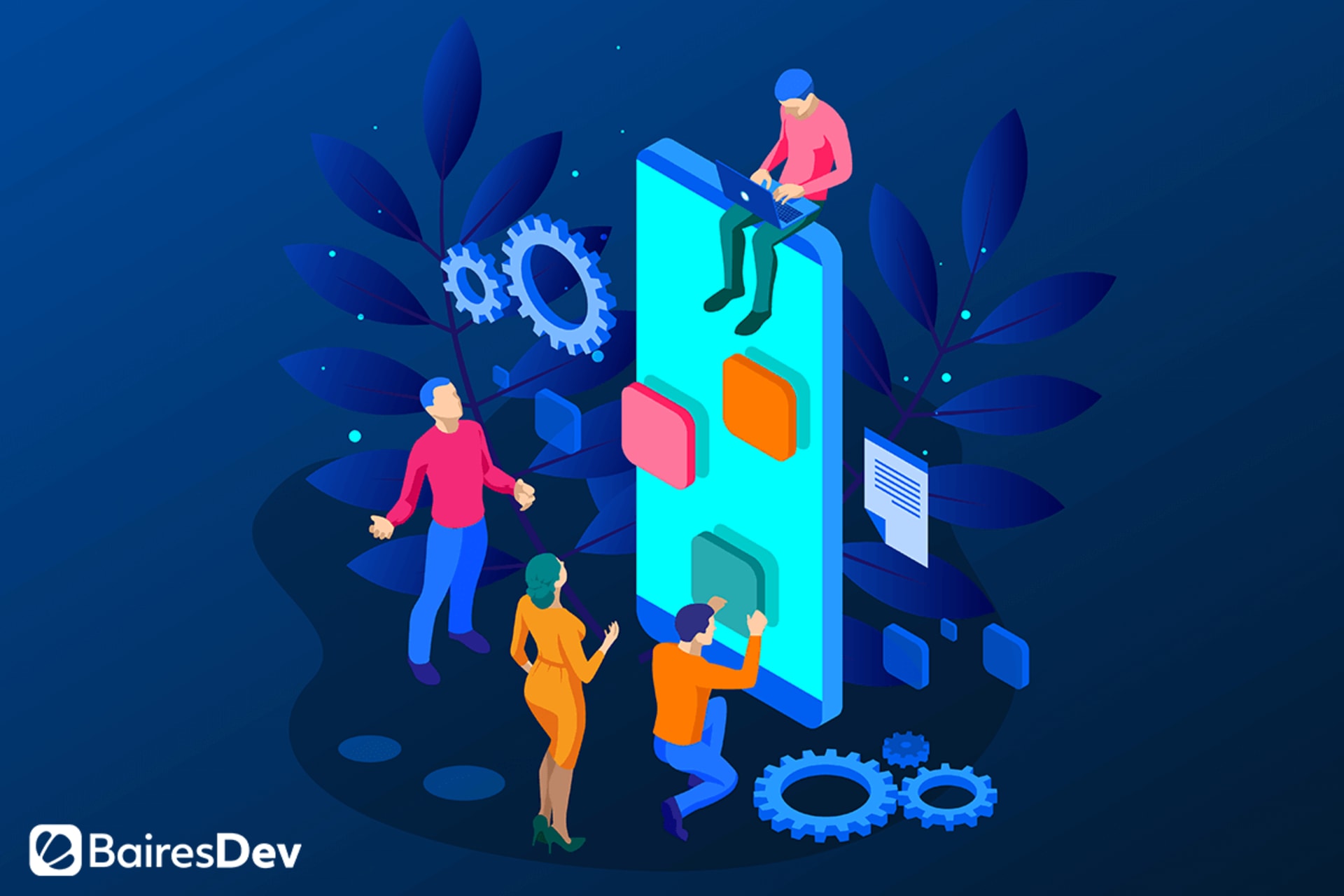Mobile App Development Company
Access the top 1% of LATAM tech talent within 2 weeks. Delight users with engaging mobile apps, delivered seamlessly.
500+ companies rely on our top 1% tech talent.
Mobile App Development Services We Provide
Native Mobile App Development
Create a unique, platform-specific mobile app. Native mobile apps leverage the specific capabilities of individual platforms to improve user engagement and satisfaction.
Our developers use the latest IDEs, such as Android Studio and Xcode, along with performance profiling tools, to create an intuitive user experience. If your business wants to provide a superior user experience on different platforms, a native mobile app is the way to go.
Cross-Platform App Development
Reduce production time and reach a wider audience with an app that works on multiple platforms. You can save time and resources using a cross-platform rather than native app development approach.
Our mobile app developers utilize cross-platform tools like React Native and Flutter to create apps that work across multiple platforms. Thanks to these tools and a unified code base, we produce cross-platform apps more quickly, allowing you to connect with your user base sooner.
Progressive Web App Development
Harness modern web capabilities with progressive web app (PWA) development. Deliver an app-like experience to a wide user base by connecting with them through their web browsers rather than a standalone app they need to download.
Using tools like Workbox and Lighthouse, our mobile app developers create PWAs that function offline, deliver push notifications, and protect user data.
iOS App Development
Your business needs a way to connect with enterprise corporate clients and individual consumers alike. One of the best ways to do this is with a dedicated iOS app. Reach a broad iOS audience and have a secure app that your audience loves.
Our developers use robust iOS development tools like Xcode and Interface Builder to streamline development.
Android App Development
One of the most significant advantages of the Android platform is the number of customization options. Create a unique app experience for your audience that connects with users worldwide and on different types of Android devices.
With modern tools like Android Studio and the Software Development Kit (SDK), our developers creates custom Android apps.
Wearables and Embedded Software
Connect with your audience in an entirely new way thanks to wearables and embedded software. We'll help you leverage the latest technology trends to stay competitive in your market.
We build apps for wearables using tools like Arduino, PlatformIO, and MBED—whether you're looking to create the next great health monitoring app, help your audience stay productive, or track sleeping patterns.
Rolls Royce case study
BairesDev developed a cutting-edge progressive web app (PWA) for Rolls Royce to enable real-time monitoring of multiple nuclear plants, ensuring optimal performance through rigorous QA sessions. Rolls Royce Case Study.

Key Things to Know About Mobile App Development
Best Practices for Mobile App Development
Mobile application development itself is only half the battle. It's important to design the app with the user in mind, focusing on an accessible, responsive interface. Our UX/UI designers focus on crafting user-friendly apps.
We ensure your app is usable by the widest possible audience. We adhere to accessibility guidelines for Android and iOS respectively, use semantic UI elements, support dynamic text sizing, ensure screen reader compatibility, and implement color contrast. We also design for different interaction modes, offer multiple navigation options, and implement features like captions, subtitles, and voice control compatibility.
A mobile app developer must focus on intuitive navigation and user flow because it directly impacts the user experience.
Mobile app stores provide design-specific guidelines. Apple's guidelines for iOS are laid out in the Human Interface Guidelines, while Google's Material Design forms the basis of Android app design principles. These help ensure a seamless user experience.
Optimizing mobile technologies for performance and loading speed is critical for providing a smooth user experience. To improve performance, we take steps such as writing efficient code, minimizing app size, using efficient third-party libraries, implementing lazy loading, and conducting thorough performance testing.
With an increasing number of users leveraging mobile devices, all developers must prioritize responsive design, meaning that the app responds consistently across different types of devices. The app should look and feel the same on mobile, desktop, and tablet devices.
Our development and design process focuses on minimizing resource consumption while ensuring functionality and a strong user experience.
Build mobile apps that are scalable as you accommodate more users and features. Create an architecture that's flexible.
Incorporate security measures like data encryption, multi-factor authentication (MFA), code obfuscation, regular updates and patching, error handling, and tamper detection. These practices and protocols lead to a safer user experience.
Mobile apps need to run on different platforms. Confirm functionality and usability by testing them on a variety of devices.
Regularly updating and maintaining your app is crucial for enhancing security, improving the user experience, maintaining compatibility with the newest OS versions, and adapting to technological advancements and changes.
Analytics will give you insight into user behaviors, trends, and more. You'll learn more about your app and how to improve it.
The field is constantly evolving, and it is critical to stay up to date with the latest mobile trends and developments.
Incorporating offline functionality allows users to access and utilize your app even when they don't have an internet connection.
Agile approaches like Scrum and Kanban contribute to a more collaborative and effective mobile application development process.
Why Choose BairesDev for Mobile App Development

Hundreds of Mobile App Projects to Date
With hundreds of projects completed to date, our team has the wide range of expertise necessary to build your custom mobile app.
Tailored Solutions
A custom-made mobile app delivers improved results for your business. We create apps based on your specific needs, leading to better user engagement and customer satisfaction.
Nearshore, Time Zone-Aligned Talent
We share overlapping business hours with clients in the US because most of our mobile developers live in Latin America. Our global team lets us stay in communication with you throughout development.
Our process. Simple, seamless, streamlined.
During our first discussion, we'll delve into your business goals, budget, and timeline. This stage helps us gauge whether you’ll need a dedicated software development team or one of our other engagement models (staff augmentation or end-to-end software outsourcing).
We’ll formulate a detailed strategy that outlines our approach to backend development, aligned with your specific needs and chosen engagement model. Get a team of top 1% specialists working for you.
With the strategy in place and the team assembled, we'll commence work. As we navigate through the development phase, we commit to regularly updating you on the progress, keeping a close eye on vital metrics to ensure transparency and alignment with your goals.
FAQs
The two primary platforms for mobile app development are iOS (developed by Apple) and Android (developed by Google). Developers typically use Swift or Objective-C for iOS apps, and Java or Kotlin for Android apps. Cross-platform solutions like React Native or Flutter are also popular for building apps that work on both platforms.
The development time for a mobile app can range from a few weeks for a basic app to several months or more for a complex app with multiple features. The timeline depends on the scope of the project, the development process, and the responsiveness of the client during feedback cycles.
The cost of developing a mobile app can vary widely based on factors like app complexity, features, type of service provider, development platform, and geographic location of the development team.
Native development involves building separate apps for each platform (iOS and Android) using platform-specific languages and tools. Cross-platform development involves using a single codebase to create apps that run on multiple platforms, which can be more time and cost-efficient.
User experience is crucial in mobile app development. A well-designed UX ensures that the app is intuitive, easy to use, and meets the needs of its target audience. Good UX can significantly impact user retention, satisfaction, and overall success of the app.
Consider factors like the company's breadth of development services, portfolio, client reviews, expertise in your required technology, communication skills, and development cost. It's also important to ensure they understand your business needs and have a proven track record of delivering quality apps.
Current trends in mobile app development include the increasing use of artificial intelligence and machine learning, augmented reality (AR), virtual reality (VR), Internet of Things (IoT) integration, and a focus on mobile app security.
Scalability is about ensuring the app can handle increased loads and user growth without performance degradation. This involves designing efficient databases, optimizing server infrastructure, using cloud services for flexibility, and regularly testing the app's performance under simulated high-load conditions.
App security is a critical aspect of development. Key considerations include implementing strong data encryption, securing data transmission, regularly updating the app to patch any vulnerabilities, and adhering to best practices for authentication and authorization. It's also important to comply with relevant data protection regulations like GDPR or HIPAA.
Web development and mobile development are two important areas in the creation of digital solutions. They require different development environments and programming languages and tools. Web apps and mobile apps also follow different guidelines and have distinct designs and types of interactions.
How Businesses Can Overcome the Software Development Shortage
BairesDev Ranked as one of the Fastest-Growing Companies in the US by Inc. 5000

See how we can help.Schedule a Call









